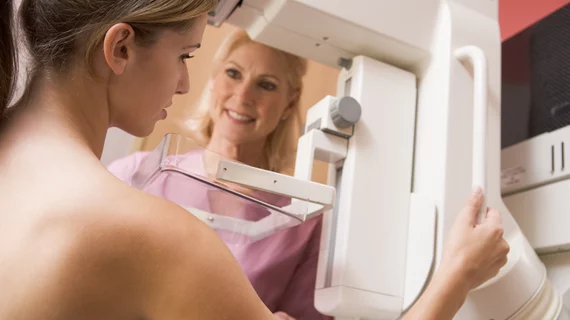Women initially deemed to have a less than 2% chance of developing breast cancer often skip the recommended follow-up MRI six months later. Johns Hopkins researchers are attempting to understand why, and recently published some early insights into the issue.
They estimated that about 24% of patients categorized as a 3 in the Breast Imaging Reporting and Data System (BI-RADS) did not return for their re-examination. Factors fueling that failure included high out-of-pocket expenses and a lack of any past history of breast cancer in the family, according to the study, published Oct. 8 in the Journal of the American College of Radiology.
“Our data suggest that there may be subsets of patients who would benefit from additional support and resources to help increase their likelihood to follow through with recommended short-interval follow-up,” concluded Emily Ambinder, MD, a Johns Hopkins radiology instructor, and colleagues. Those could include automated reminders or more concerted communication after the visit, they wrote.
The authors analyzed data from nearly 3,000 breast MRI exams administered at the Baltimore institution between 2011 and 2016. They pinpointed 185 individuals who met the study’s criteria, with a provider labeling them as BI-RADS category 3.
About 57% of study subjects received their follow-up examination in a timely fashion within 10 months, and another 18% did so after a slightly longer period of time. Meanwhile, about 24%, or 45 individuals, never visited for their follow-up MRI.
Ambinder and colleagues found no connection between sociodemographic factors (i.e., race, marital status, living situation) and compliance. However, they did find that women with higher out-of-pocket expenses tended not to return; noncompliant patients averaged $352 compared to $83 for compliant. Having a family or personal history with breast cancer also made patients more likely to return for an MRI six or so months later, they found.
Reasons for the initial examination are also important. For instance, half of patients who presented to their doctor for “problem solving” were noncompliant with the follow-up MRI. That’s compared to 60% compliance for women who underwent high-risk screenings.
There are several noted limitations of the study, according to the authors. The study population was small at just 185 and confined to only Johns Hopkins, and the authors were not able to obtain out-of-pocket costs or education for all subjects.

